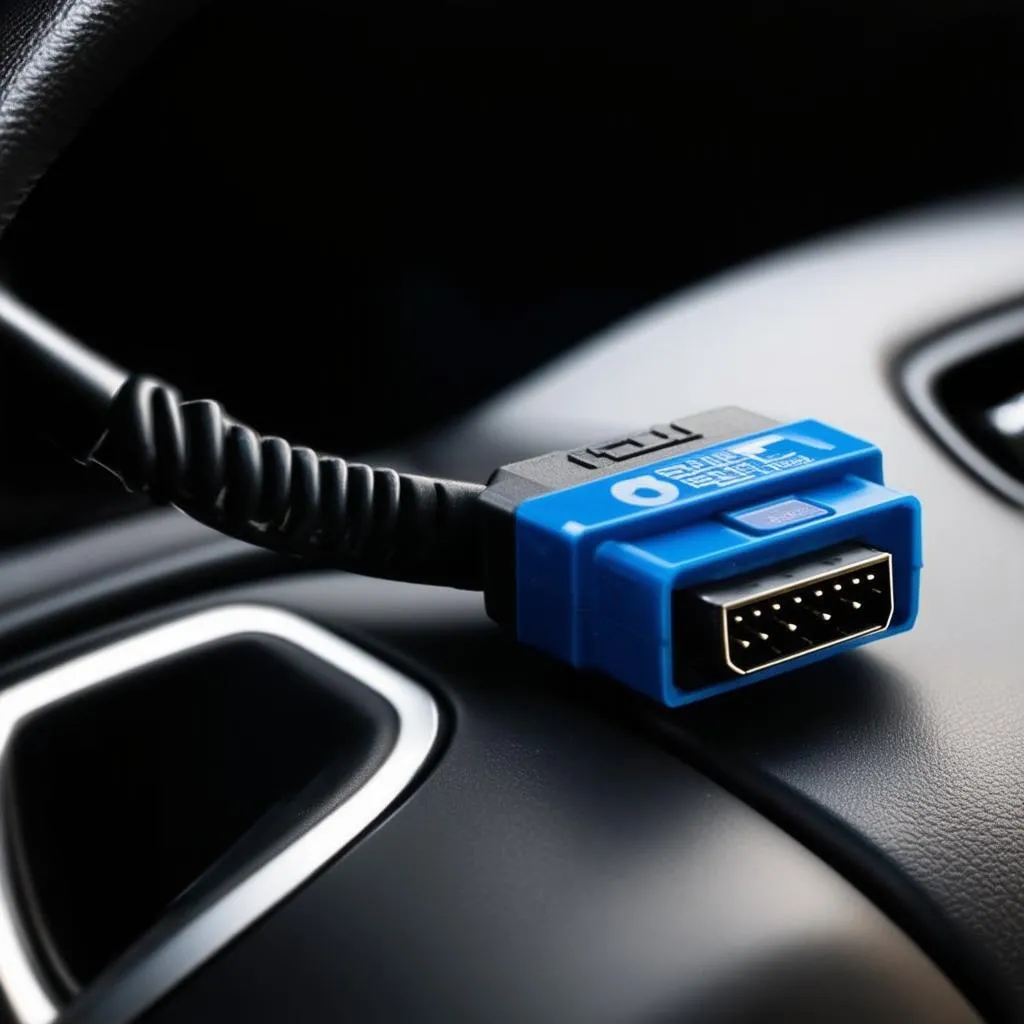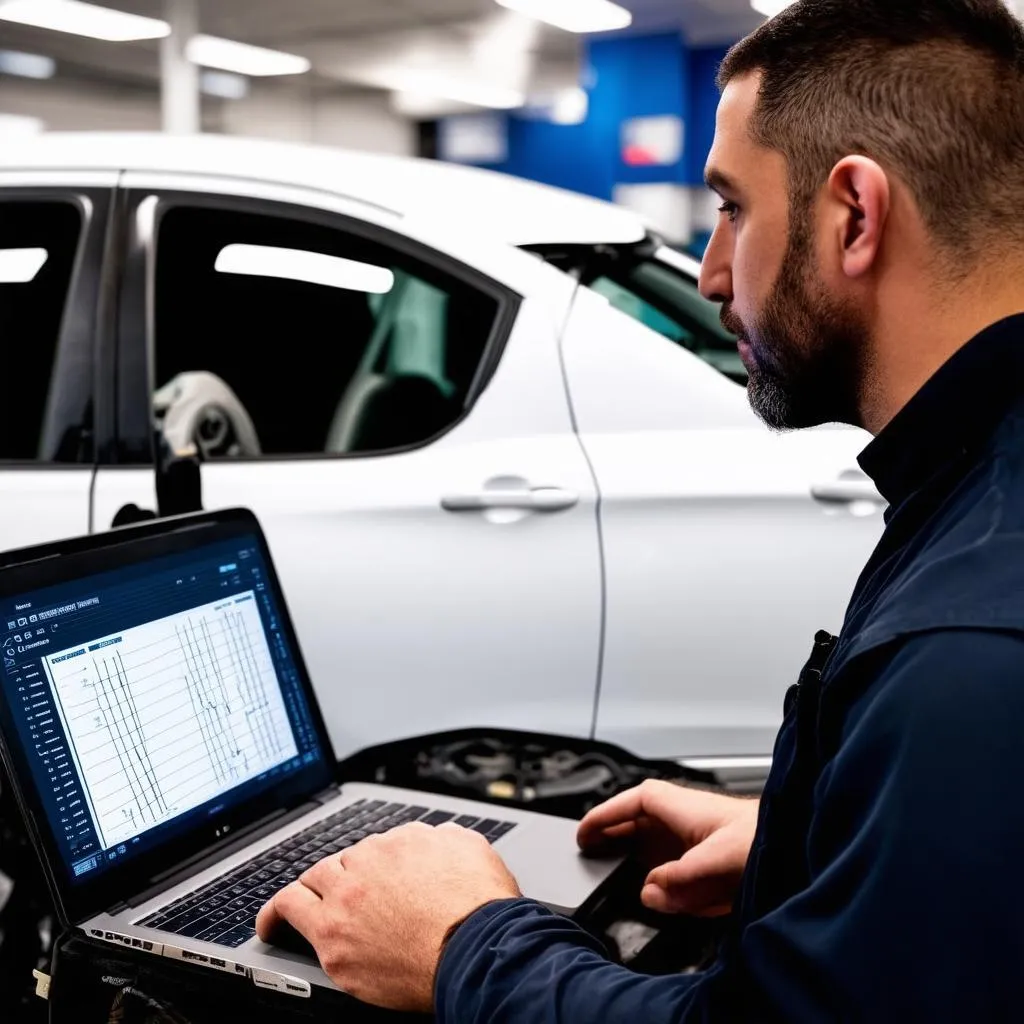Picture this: You’re cruising down the Pacific Coast Highway in your Ford Mustang, the California sun warming your face. Suddenly, the “Check Engine” light pops on, casting a shadow over your blissful drive. You pull over, heart sinking, wondering what could be wrong. Fear not, fellow driver! Your On-Board Diagnostics II (OBD II) port might hold the answers. But can it truly read all faults? Let’s dive into the world of car diagnostics and find out.
What Your Mechanic Wishes You Knew About OBD II
As an auto repair specialist, I often encounter misconceptions about OBD II systems. People assume these magical ports are all-knowing oracles of their car’s health, capable of revealing every hiccup and glitch. While powerful, OBD II has its limitations.
Think of your car’s computer system like the human nervous system. The OBD II port is like a doctor’s stethoscope, listening for irregular signals. It excels at detecting issues related to emissions, engine performance, and other vital systems. However, just like a stethoscope won’t diagnose a broken bone, OBD II can’t catch every mechanical or electrical gremlin.
Decoding the Language of Your Car
“Can Obd Ii Read All Faults?” is a question with a multifaceted answer. From a technical standpoint, OBD II scanners communicate with your car’s Engine Control Unit (ECU), retrieving standardized Diagnostic Trouble Codes (DTCs). These codes, often starting with “P” for powertrain, pinpoint specific areas of concern.
For instance, a P0420 code suggests a problem with the catalytic converter system, potentially indicating a faulty oxygen sensor in your Toyota Camry. Armed with this information, a mechanic at a local repair shop in Chicago can efficiently diagnose the root cause and recommend a solution.
However, the comprehensiveness of fault detection depends on factors like:
- Car make and model: European cars, especially luxury brands like BMW or Mercedes-Benz, often utilize manufacturer-specific codes alongside standard OBD II codes. These proprietary codes might require specialized dealer-level scan tools for accurate interpretation.
- Age of the vehicle: Vehicles manufactured before 1996 might not be equipped with OBD II ports or may have earlier versions with limited functionality.
- Severity and type of fault: While OBD II excels at detecting emissions-related issues, it might not always pinpoint problems with non-emission components like power windows, infotainment systems, or certain body control modules.
When OBD II Falls Short
Imagine your Audi A4 suddenly refuses to start. You connect your trusty OBD II scanner, but it throws no codes. Does this mean your car is perfectly fine? Not necessarily.
This scenario highlights a crucial point: the absence of OBD II codes doesn’t guarantee a healthy vehicle. Mechanical issues, wiring problems, or faults within systems not directly monitored by the ECU might not trigger DTCs.
Navigating the Diagnostic Maze: Tips and Tricks
-
Invest in a Quality OBD II Scanner: While budget-friendly scanners can provide basic code readings, investing in a higher-end model or a manufacturer-specific tool can unlock more detailed information, including live data streams and access to proprietary codes. Our article on “Bluetooth OBD Scanners Reviews” can guide you towards a scanner that fits your needs.
-
Don’t Underestimate the Power of Experience: OBD II codes are just starting points. Interpreting them within the context of your car’s symptoms, maintenance history, and other diagnostic tests is crucial for accurate diagnosis. If you’re unsure, consult a qualified mechanic.
-
Go Beyond the Codes: If your OBD II scan comes up empty but your car exhibits strange behavior, don’t ignore it. Consider checking for other signs of trouble, like unusual noises, fluid leaks, or warning lights on the dashboard.
Related Questions You Might Be Asking:
- Can I use an OBD II scanner on my classic car? (Check out our article: “How to Scan Cars Without OBD”)
- Are there specific OBD II codes for Chrysler vehicles? (Learn more in our article: “Chrysler Specific OBD II Codes”)
- My Bosch OBD 1050 scanner isn’t working. What should I do? (Find troubleshooting tips in our article: “Bosch OBD 1050 Not Working”)
 OBD Scanner Connected
OBD Scanner Connected
 Mechanic Using Laptop for Diagnostics
Mechanic Using Laptop for Diagnostics
Keep Your Ride Running Smoothly
While “Can OBD II read all faults?” might seem like a simple question, the answer is anything but. Understanding the capabilities and limitations of OBD II empowers you to take charge of your car’s health. Remember, knowledge is power, especially when it comes to keeping your vehicle running smoothly.
Need help deciphering those cryptic codes or navigating the world of car diagnostics? Don’t hesitate to reach out! Our team of automotive experts is available 24/7 via WhatsApp at +84767531508 to assist you with all your diagnostic tool needs.
Let us know in the comments about your experiences with OBD II scanners and any surprising discoveries you’ve made about your own vehicle. Happy driving!